Worldwide Events and Commemorations of the 8.8.88 Uprising
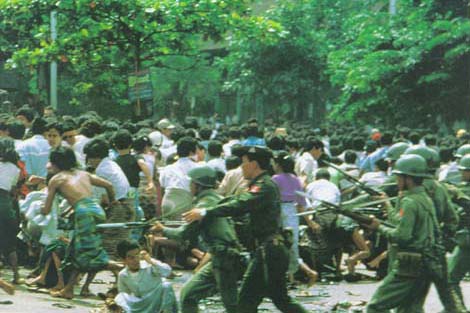
On 8 August 1988, thousands of people took to the streets in Rangoon. People from all walks of life, including monks, teachers, hospital workers, government workers, and many others all joined in the protests. As the day progressed, the protests grew in size and inspired citizens in other areas of Burma to join in demonstrations in their cities.
That evening the military violently retaliated, opening fire with machine guns on the unarmed protesters. The shootings continued into the night and the following days.
Activists from Burma and their supporters around the world mark this day every year in commemoration of those who lost their lives and to reaffirm their commitment to achieving democracy and human rights in their country.
The following are some of the events and commemorations that were held this year.
Posts about ‘8888 Anniversary’
23rd 8888 Anniversary Protest in front of Burmese Consulate in New York (Photos)
About 100 Burmese activists protested in front of Burmese Consulate in New York on Aug 8 to commemorate the 23rd anniversary of 8888 uprising. Protests was led by 88 generation students and joined by other democracy supporters […]
| |100 Join Burma Massacre Anniversary Protest at German Embassy
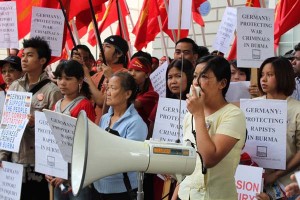 100 people joined a protest at the Germany Embassy in London today, protesting against Germany’s opposition to a UN Commission of Inquiry into war crimes and crimes against humanity in Burma.
100 people joined a protest at the Germany Embassy in London today, protesting against Germany’s opposition to a UN Commission of Inquiry into war crimes and crimes against humanity in Burma.
The protest was held on the 23rd anniversary of the 1988 pro-democracy uprising in Burma, where more than 3,000 people were massacred by the dictatorship […]
| |Demonstration in front of ASEAN Secretariat Office, Indonesia on 23rd Anniversary of 8888
Indonesian Solidarity for Southeast Asian People (SIAP) organized a demonstration in front of ASEAN Secretariat Office in Jakarta, Indonesia on the 23rd Anniversary of 8.8.88, 8 August 2011 […]
| |End Oppression Now! Support a Commission of Inquiry on Crimes Against Humanity in Burma!
More than 50 people representing the Free Burma Coalition – Philippines held a demonstration in front of the Philippine Department of Foreign Affairs (DFA) at Roxas Blvd in Manila calling on the Philippine government to support the international call for the creation of a UN Commission of Inquiry to investigate crimes against humanity in Burma. The demonstrators held a program to commemorate the 23rd year anniversary of the violent crackdown on Burma’s national people’s uprising outside of the DFA building while a short ceremony was happening inside to celebrate the 44th year since the founding of the Association of Southeast Asian Nations (ASEAN) […]
| |Commemoration of 8888 Nationwide uprising on 23rd Anniversary in Rangoon (Photos)
Commemoration of 8888 Nationwide uprising on 23rd Anniversary in Rangoon was well participated with presence of NLD leaders and many others people. There was also distribution of flyers and paper wishing for peace and call for release of political prisoners, end of armed conflicts in ethnic areas and initiation of tripartite dialogue. View all photos on Flickr here […]
| |23 Years after 8-8-88 — It Is Finally Time For Asean to Get It Right on Burma
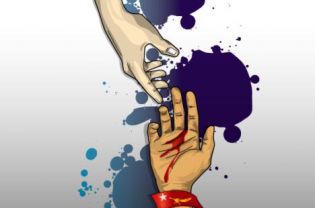 Twenty-three years after the democracy uprising of 1988 in Burma was brutally crushed, the world has gone through remarkable changes. In particular, Asean’s role in economic cooperation, peace and security as well as human rights and humanitarian issues has grown dramatically.
Twenty-three years after the democracy uprising of 1988 in Burma was brutally crushed, the world has gone through remarkable changes. In particular, Asean’s role in economic cooperation, peace and security as well as human rights and humanitarian issues has grown dramatically.
But the people of Burma, which was renamed Myanmar by the military junta after the uprising, have faced continued suppression by their own government even after last year’s so-called general elections and promised reforms. The dedication and sacrifice of the people who bravely stood up against the military regime 23 years ago remains commendable. In keeping with their people’s desire for a free and democratic homeland, Burma’s government needs to come to terms with its brutal past and stop its ongoing crackdowns against the political opposition and ethnic groups […]
| |Commemorating the 23rd Anniversary of 8.8.88
By Joy Agner
Twenty-three years ago today hundreds of thousands of Burmese people took to the streets demanding change, demanding democracy. Like many of the recent uprisings in Northern Africa and the Middle East, the revolution was led by students. Young people, perhaps emboldened by a sense of invincibility or unadulterated optimism, took incredible risks sacrificing security for the possibility of freedom. On September 18, 1988 the euphemistically titled State Law Order and Restoration Council (SLORC) cracked down hard in a desperate attempt to maintain power. Over 3,000 protesters were killed on 8/8/88 alone, 10,000 exiled, and countless jailed, injured, and affected.
Today, the Burmese government claims to be on the path to democracy, complete with an elected civilian government. On Saturday, July 14, I had a personal encounter with this so-called democracy. I traveled to Tachilek carrying pro-democracy music, literature, stickers that read “Peace in Burma Now,” and postcards with the image of Daw Aung San Suu Kyi. My intention was to send a message of encouragement and solidarity to those striving and hoping for peace. Such materials are illegal in Burma, so I distributed them randomly, giving those who found them a choice whether or not to take them, and the ability to easily and honestly deny culpability […]
| |Letter to President of Republic of the Philippines by members of Free Burma Coalition – Philippines
Today, pro-democracy groups around the world observe the 23rd Anniversary of the EDSA-inspired August 8,1988 national uprising in Burma. Mr. President, today is the day when more than10,000 peaceful demonstrators were shot, arrested and killed […]
| |8.8.88: Burma’s Past + Future
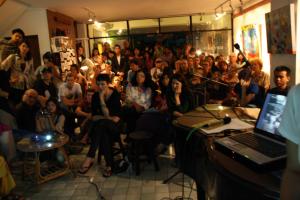 The Free Burma VJ Campaign and the Best Friend Library on Saturday organised a special event to commemorate the 23rd anniversary of Burma’s nationwide pro-democracy uprising where shared information about new campaign developments.
The Free Burma VJ Campaign and the Best Friend Library on Saturday organised a special event to commemorate the 23rd anniversary of Burma’s nationwide pro-democracy uprising where shared information about new campaign developments.
The event took place at the Sangdee Gallery in Chiang Mai, and attracted around 90 people […]
| |Protests to Mark Burma’s 8888 Nationwide Uprising
People from Burma living in foreign countries today organise a demonstration rally to mark the anniversary of what has been also known as the ‘People Power Uprising’ against the military regime on 8 August 1988 […]
| |
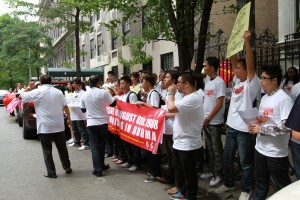
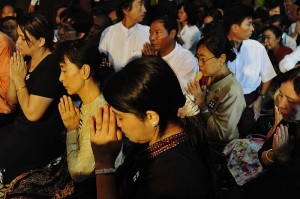








 All posts
All posts